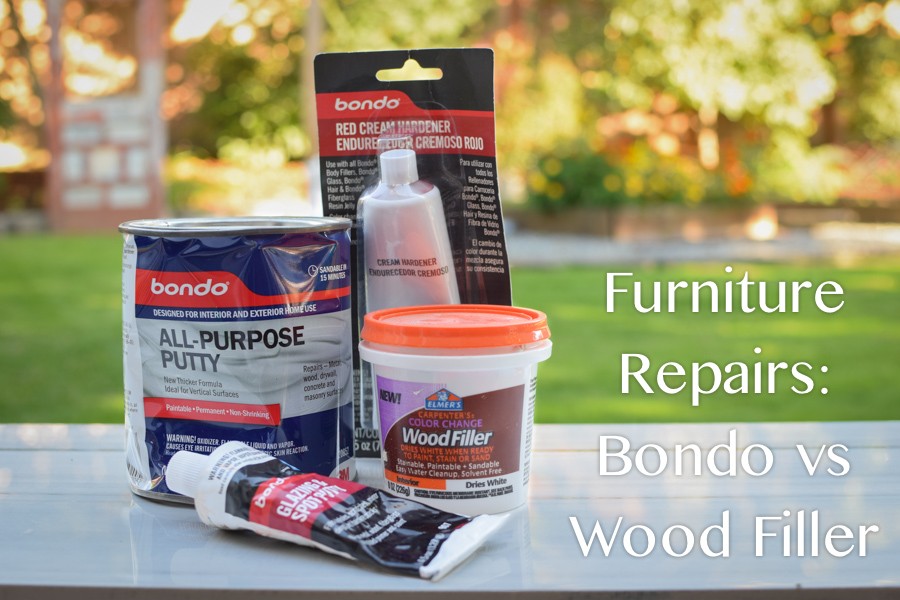Car doors are prone to damage, from minor dents and scratches to rust and more significant impacts. Repairing these damages promptly is crucial not only for your vehicle’s appearance but also to prevent further issues like rust and corrosion. While professional auto body shops offer repair services, you can tackle many car door repairs yourself, saving time and money. One effective and versatile product for DIY car door repairs is Bondo Body Filler. Originally designed for automotive body work, Bondo is excellent for fixing dents, filling holes, and repairing rust damage on car doors. This guide will walk you through how to use Bondo to repair your car door, providing a step-by-step process to achieve professional-looking results at home.
Before diving into the process, it’s important to understand what Bondo is and why it’s a great choice for car door repairs. Bondo Body Filler is a two-part putty composed of a resin base and a hardener. When mixed, these components create a chemical reaction that hardens the putty into a rigid, sandable material. Bondo is favored by car enthusiasts and DIYers alike because of its strength, durability, and ability to be shaped and sanded to match the contours of your car door. Unlike some wood fillers that are mentioned in furniture repair contexts, Bondo is specifically formulated to withstand the conditions and stresses of automotive environments.
Let’s explore the steps involved in using Bondo to repair your car door effectively.
Preparing Your Car Door for Bondo Application
The first step in any successful car door repair using Bondo is proper preparation. This involves cleaning the damaged area and preparing the surface to ensure the Bondo adheres correctly and the repair is long-lasting.
-
Clean the Damaged Area: Begin by thoroughly cleaning the area you intend to repair. Use soap and water to remove dirt, grease, and any loose debris. For tougher grime, you can use a degreaser. Ensure the area is completely dry before proceeding.
-
Remove Rust (If Applicable): If you are dealing with rust, it’s crucial to remove as much rust as possible before applying Bondo. Use a wire brush or sandpaper to scrub away loose rust. For more stubborn rust, you might consider using a rust converter or chemical rust remover. The goal is to get down to solid metal.
-
Sand the Repair Area: Sanding is essential to create a surface that Bondo can properly bond to. Use 80-grit sandpaper to rough up the area around the damage. Extend the sanding area slightly beyond the damaged spot to feather the edges of the repair. This sanding process provides “tooth” for the Bondo to grip onto.
- Clean Sanding Dust: After sanding, remove all sanding dust with a tack cloth or a damp cloth and ensure the area is completely dry again. Any dust or residue left behind can compromise the adhesion of the Bondo.
Mixing and Applying Bondo Body Filler
Once the car door is prepped, the next step is mixing and applying the Bondo. This is a critical stage, and following the correct mixing ratio and application techniques is key to a successful repair.
-
Gather Your Materials: You’ll need Bondo Body Filler, Bondo Hardener (usually comes with the filler), a mixing board or disposable surface (like cardboard or a plastic lid), a putty knife or spreader, and safety gear including gloves and a respirator.
-
Mixing Bondo and Hardener: Bondo is a two-part system that requires precise mixing. The general guideline is to use a golf ball-sized amount of Bondo filler and a cream hardener bead approximately 2-3 inches long, or as directed by the manufacturer’s instructions. Too much hardener will cause the Bondo to cure too quickly, while too little may prevent it from hardening properly. A 1:3 ratio of hardener to filler, as mentioned in the original article, can be a good starting point, but always refer to the product-specific instructions.
-
Mix Thoroughly and Quickly: Place the Bondo filler onto your mixing surface and add the hardener. Use the putty knife to mix them together immediately. Work quickly and efficiently as Bondo has a limited working time once the hardener is added—usually just a few minutes. Mix until you achieve a consistent pink or mauve color, ensuring the hardener is fully incorporated into the gray filler base. If the color is streaky, it’s not mixed well enough.
-
Apply Bondo in Thin Layers: Using the putty knife, apply a thin layer of the mixed Bondo to the damaged area of the car door. Press firmly to ensure it fills the dent or hole and bonds to the sanded surface. It’s better to apply Bondo in several thin layers rather than one thick layer. This prevents air bubbles and ensures proper curing. For deeper repairs, allow each layer to become tacky before applying the next.
-
Shape and Smooth: As you apply the Bondo, try to shape it as close to the final contour as possible using the putty knife. Smoothing it out during application will reduce the amount of sanding required later. However, don’t strive for perfect smoothness at this stage, as sanding will refine the shape.
-
Allow Bondo to Cure: Let the Bondo cure completely. The curing time depends on the product and the ambient temperature, but it typically takes about 20-30 minutes to become sandable. It will be hard to the touch when cured. Avoid disturbing the repair while it’s curing.
Sanding and Finishing the Bondo Repair
After the Bondo is fully cured, sanding is the next critical step to achieve a smooth, seamless repair that blends with the surrounding car door panel.
-
Start with Coarse Grit Sandpaper: Begin sanding with 80-grit sandpaper to remove excess Bondo and shape the repair to roughly match the car door’s contour. Focus on removing the bulk of the material and shaping the overall form.
-
Progress to Medium Grit Sandpaper: Once the general shape is achieved, switch to 180-grit sandpaper to refine the surface and remove scratches left by the coarser grit. Continue sanding in smooth, even strokes, blending the edges of the Bondo repair into the surrounding paint.
-
Use Fine Grit Sandpaper for Final Smoothing: For the final smoothing, use 320-grit sandpaper. This step is crucial for achieving a smooth, paint-ready surface. Pay attention to blending the edges of the repair seamlessly with the original car door panel. You can also use wet sanding with 320-grit and water to achieve an even smoother finish.
-
Check for Imperfections: After sanding, clean the area and inspect it for any imperfections. Run your hand over the repaired area to feel for any unevenness. If you find low spots or imperfections, you may need to apply a thin layer of Bondo Glazing Putty, as mentioned in the original furniture article, for a super smooth finish. Bondo Glazing Putty is designed for fine-tuning and filling minor imperfections and scratches. It’s self-leveling and easy to sand.
- Prime and Paint (Optional but Recommended): For the best and most professional-looking results, priming and painting the repaired area are highly recommended. Apply automotive primer to the sanded Bondo and surrounding area. Primer helps to seal the Bondo, provides a uniform surface for paint, and improves paint adhesion. Once the primer is dry, lightly sand it with fine-grit sandpaper (400-grit). Then, apply automotive paint that matches your car’s color code in thin, even coats, following the paint manufacturer’s instructions. Clear coat can be applied after the color coat for added protection and shine.
Tips for Using Bondo on Car Doors
- Work in a Well-Ventilated Area: Bondo has a strong odor due to the chemicals involved. Always work in a well-ventilated area or wear a respirator to avoid inhaling fumes.
- Mix Small Batches: Bondo cures quickly, so mix only small batches that you can use within a few minutes to avoid wasting material.
- Use a Plastic Spreader: A plastic putty knife or spreader works best for applying Bondo and is easy to clean or dispose of.
- Clean Tools Immediately: Clean your mixing tools and putty knife immediately after use with acetone or lacquer thinner before the Bondo hardens.
- Multiple Thin Layers are Better: For deeper dents or holes, apply Bondo in multiple thin layers rather than one thick layer to prevent cracking and ensure proper curing.
- Purchase Extra Hardener: As noted in the original article, consider purchasing extra hardener separately, especially if you plan to use Bondo for multiple projects.
Conclusion
Using Bondo to repair a car door is a cost-effective DIY solution for dents, scratches, and rust damage. By following these steps for preparation, application, sanding, and finishing, you can achieve professional-quality repairs at home. While it may take some practice to master the techniques, the results are well worth the effort, saving you money and keeping your car looking its best. Remember to prioritize safety, work in a ventilated area, and take your time to achieve a smooth and lasting repair. With Bondo and a little elbow grease, you can confidently tackle many common car door repairs yourself.


